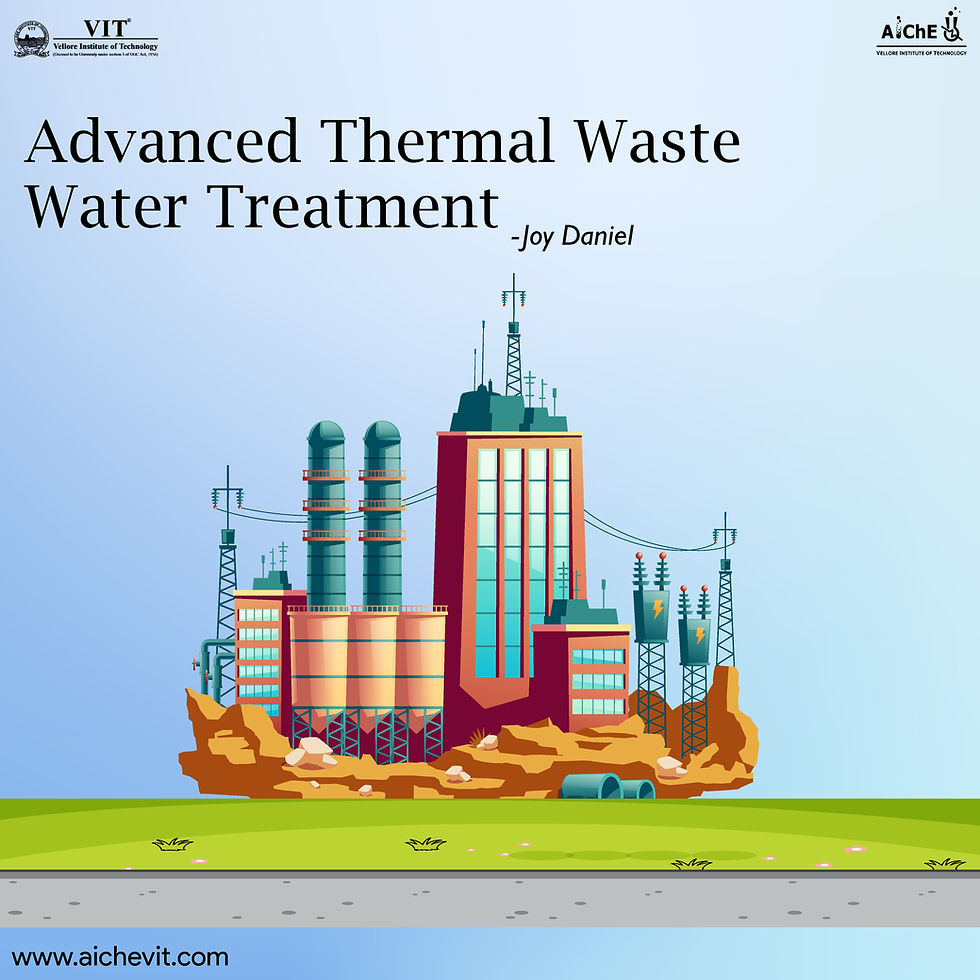Dread It. Run from It. Pollution still Arrives.
- AIChE-VIT

- Aug 8, 2019
- 4 min read
Updated: Sep 21, 2019
-Sparsh Modi
A new born child comes from its mother’s womb expecting to enter a world filled with beauty. However, the hospital doors open and it is welcomed with nothing but the heinous clouds of smoke, the sound of blaring cars and the toxic taste of water.

Pollution. That’s one word we’ve all been hearing about since we learnt our alphabets. In a nutshell, pollution is nothing but the introduction of contaminants into the environment which results in adverse changes to it. Whenever we talk about pollution, our minds are wired to think of two major incidents-The Bhopal Gas Tragedy in 1984 and the Chernobyl Disaster in 1986. And we start to wonder what if we were a little more cautious? A little more careful? Then maybe, just maybe, millions of lives could have been saved. What if? Merely two words. Two words that can change the complexion of every outcome that we face. Over the years, a lot of strategies have been employed to curb this catastrophe called pollution. However, the sweet taste of success is yet to be achieved. Well, it’s high time we take steps to challenge the “what if’s” of pollution. The best way to achieve the same is to start optimizing our pollution control strategies and that can be done only if the importance of chemical engineering in pollution control is recognized, comprehended and applied. Chemical engineering emphasizes on conceiving and designing processes to produce transform and transport materials, beginning with experimentation in the laboratory followed by implementation of the technology in full-scale production. Almost every pollution control drive that has been implemented across generations has had chemical engineering written all over it. For example, the conventional pollution control devices like electrostatic precipitators, fabric filters, cyclone separators and wet scrubbers are all based on its principles.However, nowadays, the old technologies are rapidly being replaced by more advanced sciences and better results. Let’s emphasize on this fact by giving a couple of examples.

Air purification is a priority in this day and age. Initially, absorption was the principal carbon dioxide capture strategy. However, in the recent times, two innovations in the form of membrane and cryogenic separation have been developed to produce much higher efficiency. Membrane separation is a technology which selectively separates materials through pores and minute gaps in the molecular arrangement of a continuous structure while cryogenic separation is suitable for separating carbon dioxide from a gas stream with a high concentration of carbon dioxide. Dust filters, electrofilters and adsorption carbon filters have been replaced by a brand new technology - Photocatalytic Filtration. The basic principle involved is photocatalytic oxidation of organic compounds to innocuous clean air components. Another product of chemical engineering is the fuel cell vehicle. A fuel cell vehicle is a type of electric vehicle which uses a fuel cell, instead of a battery, or in combination with a battery or supercapacitor, to power its on-board electric motor. Fuel cells in vehicles generate electricity to power the motor, generally using oxygen from the air and compressed hydrogen. Most fuel cell vehicles are classified as zero-emissions vehicles that emit only water and heat. Two advanced techniques for the simultaneous desulphurisation and denitrification of flue gases- activated carbon and electron beam irradiation methods have been developed. The former utilises activated carbon to absorb sulphur oxides from the flue gases and due to its catalytic effects, ammonia decomposes the nitrogen oxides to nitrogen hence achieving desulphurisation and denitrification at the same time. While the latter achieves the same by adding ammonia to the exhaust gas using an electron beam to irradiate the substance, thereby converting the sulphur oxides into ammonium sulphate and the nitrogen oxides to ammonium nitrate, making the flue gases free of sulphur and nitrogen oxides very effectively and efficiently. This has helped in the purification of flue gases to quite a large extent. On the other hand, adsorption is an effective process of water pollution control. Activated carbon is the most widely used adsorbent . The application of magnetic adsorbent technology for separation of pollutants in water has received considerable attention in recent years. During the past decade, great efforts have been devoted to the preparation of a variety of magnetic composites for wastewater treatment. Magnetic adsorbents are an attractive solution for metallic and dye pollutants, particularly due to the simple magnetic separation process and help in the eradication of pollutants from water. Well, we have established that chemical engineering and pollution control are two sides of the same coin. The key to a pollution free world is chemical engineering and there is no denying that. “We still think of air as free. But clean air is not free, and neither is clean water. The price tag on pollution control is high. Through our years of past carelessness we have incurred a debt to nature, and now that debt is being called.” It’s time we all make efforts to break free of this debt. To start painting the world to how it was. It’s time we all take responsibility and fight or else this will be a war that the entire mankind will lose. It’s time we stand united and give it our all to mitigate this disaster. I am ready. Are you?





Comments